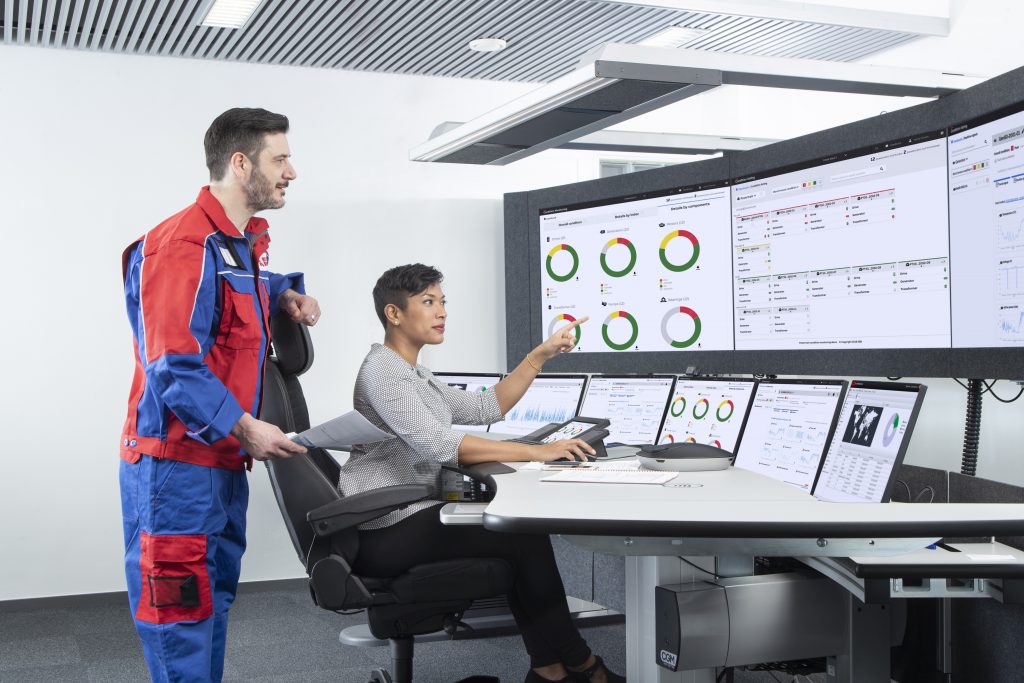
Service models evolve in response to the ‘new normal’
Many industrial customers have long relied on service providers to help keep operations running safely, reliably and profitably.
February 2, 2021 | By Adrian Guggisberg
 Photo credit: ABB.
Photo credit: ABB. 
Photo credit: ABB.
That need continues, but the challenge is how to carry out service and maintenance operations with lockdowns, travel restrictions and social distancing. Service providers had to adapt by providing remote services based on digital solutions, without having engineers working on-site.
A new openness in sharing data
The challenge of the new normal is prompting service customers to seek new ways to ensure that their operations will always run smoothly, even when it is not possible for service technicians to visit their site. This is encouraging them to move from a traditional service model to remote services, where activities such as repair of existing equipment, and installation and commissioning of systems can be supported remotely. Using digital technology to enable service experts to connect with customers on-site, can offer considerable benefits in terms of reducing health and safety risks, and a faster response.
Connectivity is the key enabler for remote services and requires a significant change in customers making their data more accessible to their service partners. In the past, some industries, oil and gas for example, have rightly been very wary about cybersecurity and preserving the privacy of data from their assets. However, the COVID-19 pandemic has fostered a growing realization that some level of data has to be shared with trusted partners to gain the full advantages of digitalization, and preventative maintenance.
The trend in connectivity
The trend in connectivity is sure to continue as every device becomes part of a connected world. This can support better decision making that provides a firm basis to achieve improved results. It is interesting to note that some of the remote predictive monitoring services being deployed right now were technically feasible 25 years ago. However, they were hard and expensive to implement. Today, barriers have been removed with the advent of cheaper, yet more sensitive wireless sensors and cloud connectivity.
Plug and play experience, which we are familiar with from the consumer world, will accelerate the digital transformation of the service industry. As part of the growth in digital technology, we also expect to see even more developments in virtual collaboration, such as augmented reality or virtual reality, that enables service engineers to have an effective telepresence.
New business models
The change in the approach to service delivery is starting to build a new impetus to move away from the traditional business model, in which the service provider is paid for material and work carried out. Historically, should a failed electric motor or drive cause a production line to break down, a team would travel to the site to fix the problem. However, with new digital solutions, the business model is set to shift to one based on outcomes.
Rather than focusing on how quickly a team can get to the site, and how long they take to find a solution, it will be about avoiding risk. For example, customers might pay their service provider to ensure a guaranteed level of production availability. Meaning, they will rely on a service company to implement a high level of connectivity to monitor their equipment remotely, and take proactive maintenance actions to ensure that breakdowns never happen.
Whatever happens, customers will always be at the heart of a service business. However, they might be a new type of customer, such as insurance companies or investment funds within a new ecosystem. Using the Uber model as an example. In this case both the driver of the car, and the passenger, are effectively Uber customers. For service this could mean that a highly energy efficient drive and motor solution is installed, but it is financed by a pension fund, operated by an industrial group, and the service provider ensures that it meets its performance and reliability targets.
______________
Adrian Guggisberg, Division President of ABB Motion Services.
